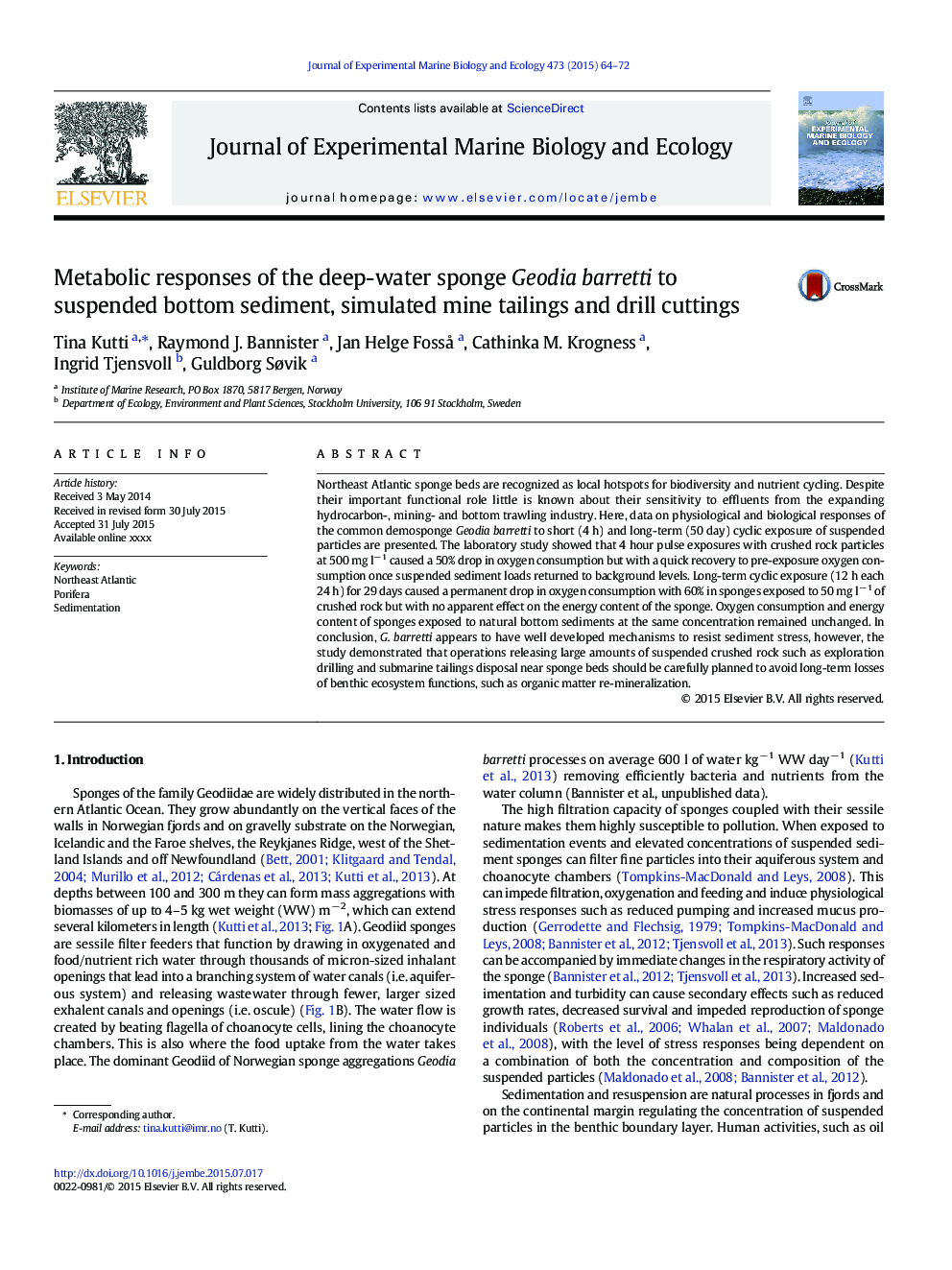| Article ID | Journal | Published Year | Pages | File Type |
|---|---|---|---|---|
| 6303798 | Journal of Experimental Marine Biology and Ecology | 2015 | 9 Pages |
Abstract
Northeast Atlantic sponge beds are recognized as local hotspots for biodiversity and nutrient cycling. Despite their important functional role little is known about their sensitivity to effluents from the expanding hydrocarbon-, mining- and bottom trawling industry. Here, data on physiological and biological responses of the common demosponge Geodia barretti to short (4 h) and long-term (50 day) cyclic exposure of suspended particles are presented. The laboratory study showed that 4 hour pulse exposures with crushed rock particles at 500 mg lâ 1 caused a 50% drop in oxygen consumption but with a quick recovery to pre-exposure oxygen consumption once suspended sediment loads returned to background levels. Long-term cyclic exposure (12 h each 24 h) for 29 days caused a permanent drop in oxygen consumption with 60% in sponges exposed to 50 mg lâ 1 of crushed rock but with no apparent effect on the energy content of the sponge. Oxygen consumption and energy content of sponges exposed to natural bottom sediments at the same concentration remained unchanged. In conclusion, G. barretti appears to have well developed mechanisms to resist sediment stress, however, the study demonstrated that operations releasing large amounts of suspended crushed rock such as exploration drilling and submarine tailings disposal near sponge beds should be carefully planned to avoid long-term losses of benthic ecosystem functions, such as organic matter re-mineralization.
Related Topics
Life Sciences
Agricultural and Biological Sciences
Aquatic Science
Authors
Tina Kutti, Raymond J. Bannister, Jan Helge Fosså, Cathinka M. Krogness, Ingrid Tjensvoll, Guldborg Søvik,
